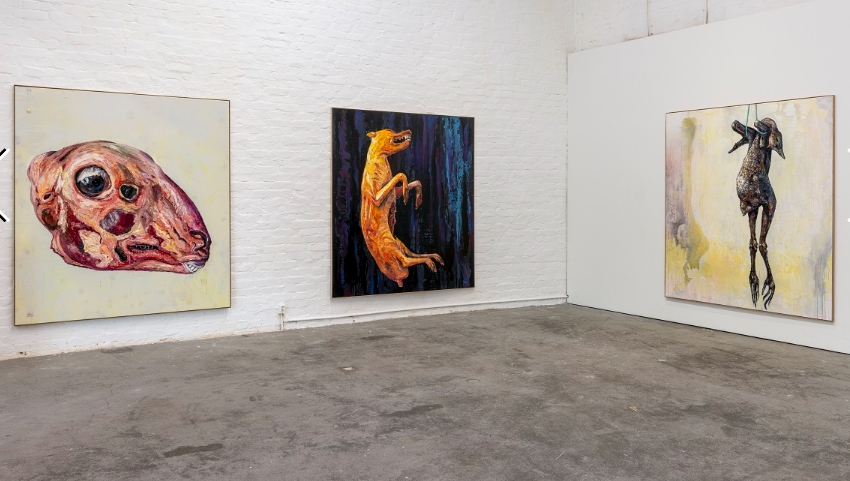The content of the paintings balances their meaning on the “knife’s edge” as the animals processed by humans depict not only suffering and the end of life, but also their meaning as food. The animate beings in Saukkonen’s works symbolize renunciation and innocence, as well as human power and alienation from nature.
The paintings’ unapologetic realism and straight brushstrokes convey a mysterious threat – but also hope. By the delicate usage of color, the animals are almost painted “alive” and their exaggerated size is used as an advocate to respect every living creature. Spiced with black humor throughout all the art works, the displayed (sur)rational tragedy is compassion, and it is up to the spectator him-/herself to decide how to complement the narratives of the paintings in this Moments of Life exhibition.
Teemu Saukkonen (b. 1954) lives and works in Tampere. The beginning of Saukkonen’s career 1978-1982 coincided with a boom in painting.The movement he represented was called neo-expressionism, a style that was characterised by figuration and a striving after individual emotional expression. Initially, Saukkonen’s subject was the human being, but later conceptual ready-made elements and abstraction entered his work. In the early 2000s Saukkonen used old cross-stitch patterns in his paintings, thereby returning to figuration. The themes of his most recent paintings have been vulnerability and ephemerality of life and the relationship between man and nature. Saukkonen has always applied contemporary artistic and social stimuli to his own art.




